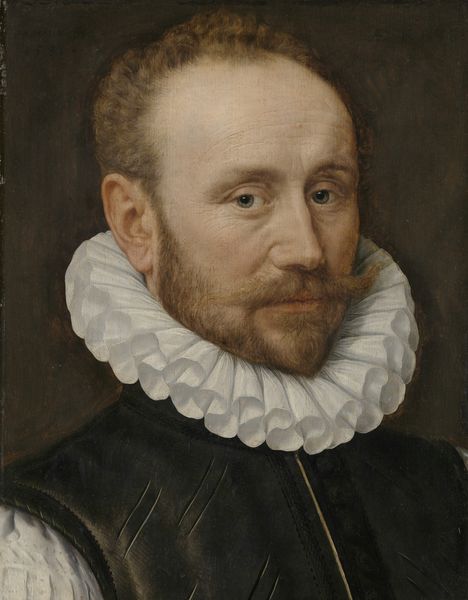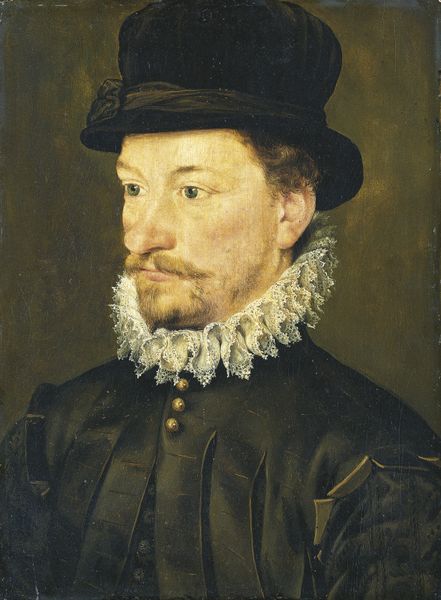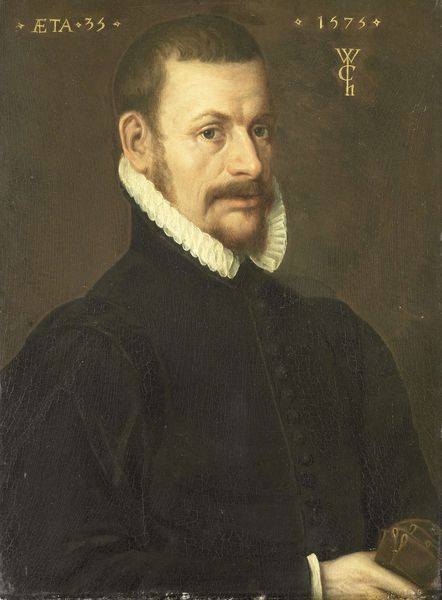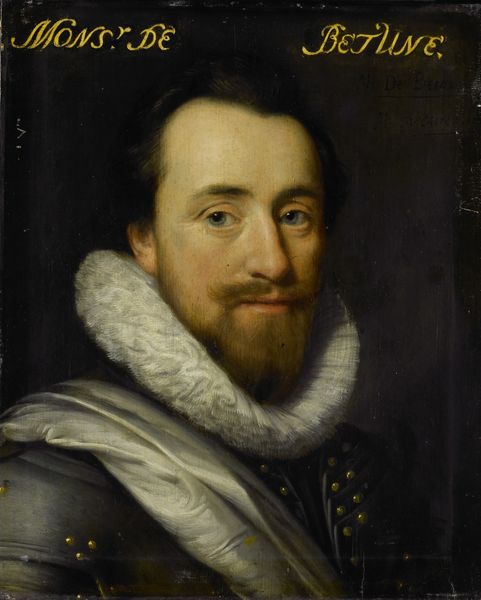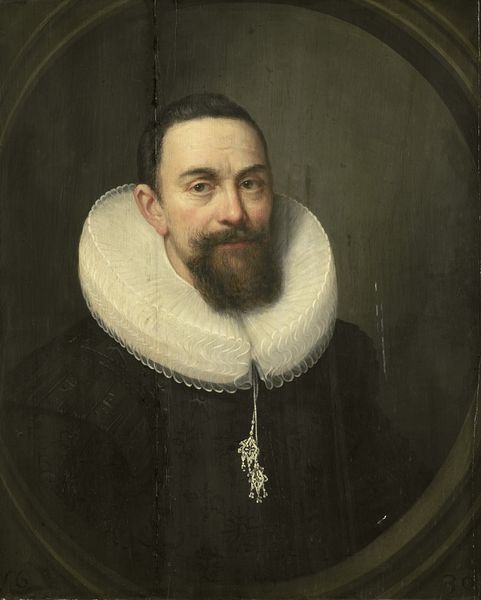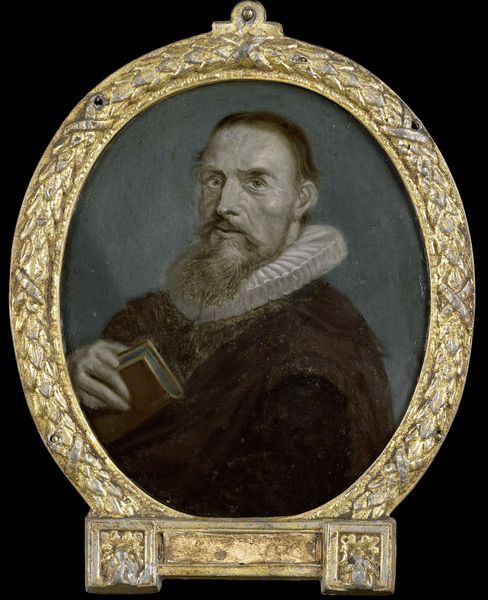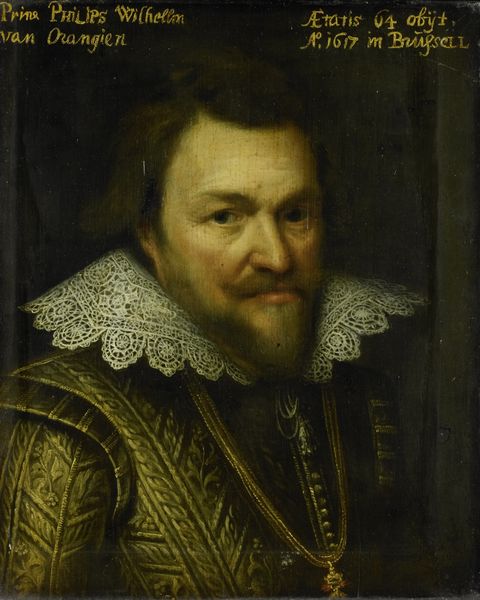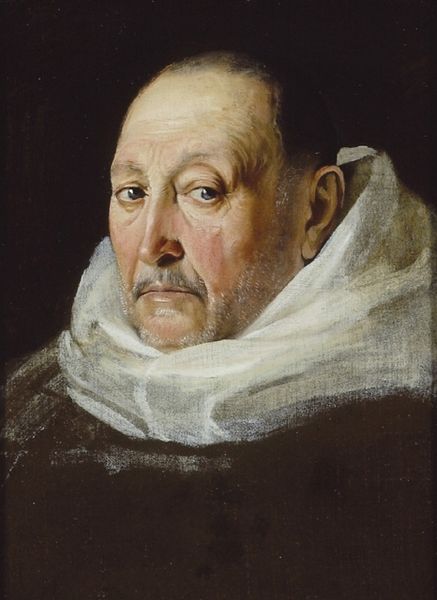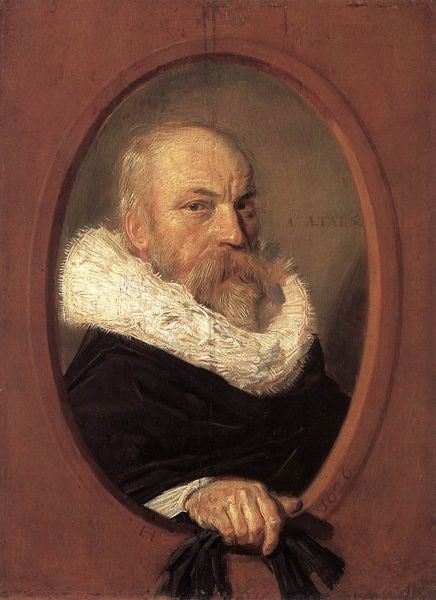
Portrait of William I. Prince of Orange, called William the Silent 1582 - 1592
0:00
0:00
painting, oil-paint
#
portrait
#
portrait
#
painting
#
oil-paint
#
mannerism
Dimensions: height 47 cm, width 32.5 cm, depth 9 cm
Copyright: Rijks Museum: Open Domain
Editor: So, this is "Portrait of William I, Prince of Orange, called William the Silent," an oil painting by Dirck Barendsz, made sometime between 1582 and 1592. There's something about his expression... determined, maybe? What stands out to you about this work? Curator: I’m struck by how the portrait functions as a powerful piece of political messaging. William the Silent was a key figure in the Dutch Revolt against Spanish rule. Consider the historical context: the Netherlands were fighting for their independence and religious freedom. This portrait, then, isn't just a likeness; it’s a carefully constructed image of leadership during a time of intense social upheaval. Editor: I see. So the artist is making a statement? Curator: Precisely. The somber attire, the stern gaze – these elements communicate steadfastness and resolve. It's also worth thinking about the artistic conventions of portraiture at the time. The Mannerist style, with its focus on elegance and drama, was evolving. How might this painting simultaneously embrace and subvert those conventions to convey a particular message about William's character and political aims? Editor: That's interesting. It almost feels like the artist is downplaying the Mannerist style to emphasize William's seriousness, maybe? Curator: Exactly! And what about the concept of "silence" associated with William? Does this portrait somehow embody or challenge that notion? Considering the stakes of the revolt, and the very real threat of violence and oppression, how might silence be both a political strategy and a form of resistance? Editor: That's a lot to think about. I hadn't considered the complexities behind what seemed like a pretty straightforward portrait. Curator: It’s a reminder that art is never created in a vacuum. By exploring the intersection of art history, political theory, and social context, we can unearth deeper meanings and appreciate the nuanced ways in which art shapes, and is shaped by, the world around it.
Comments
No comments
Be the first to comment and join the conversation on the ultimate creative platform.
